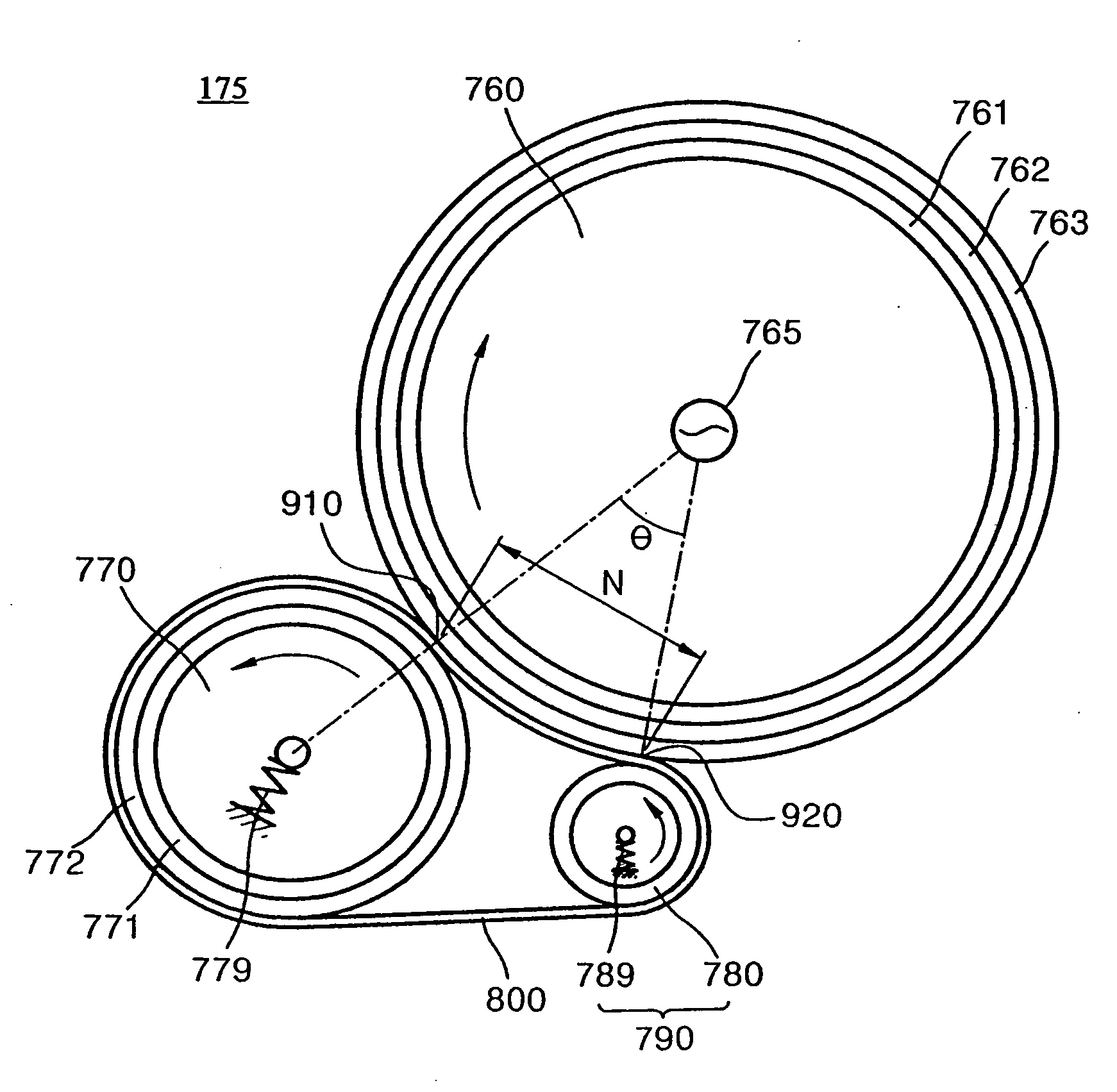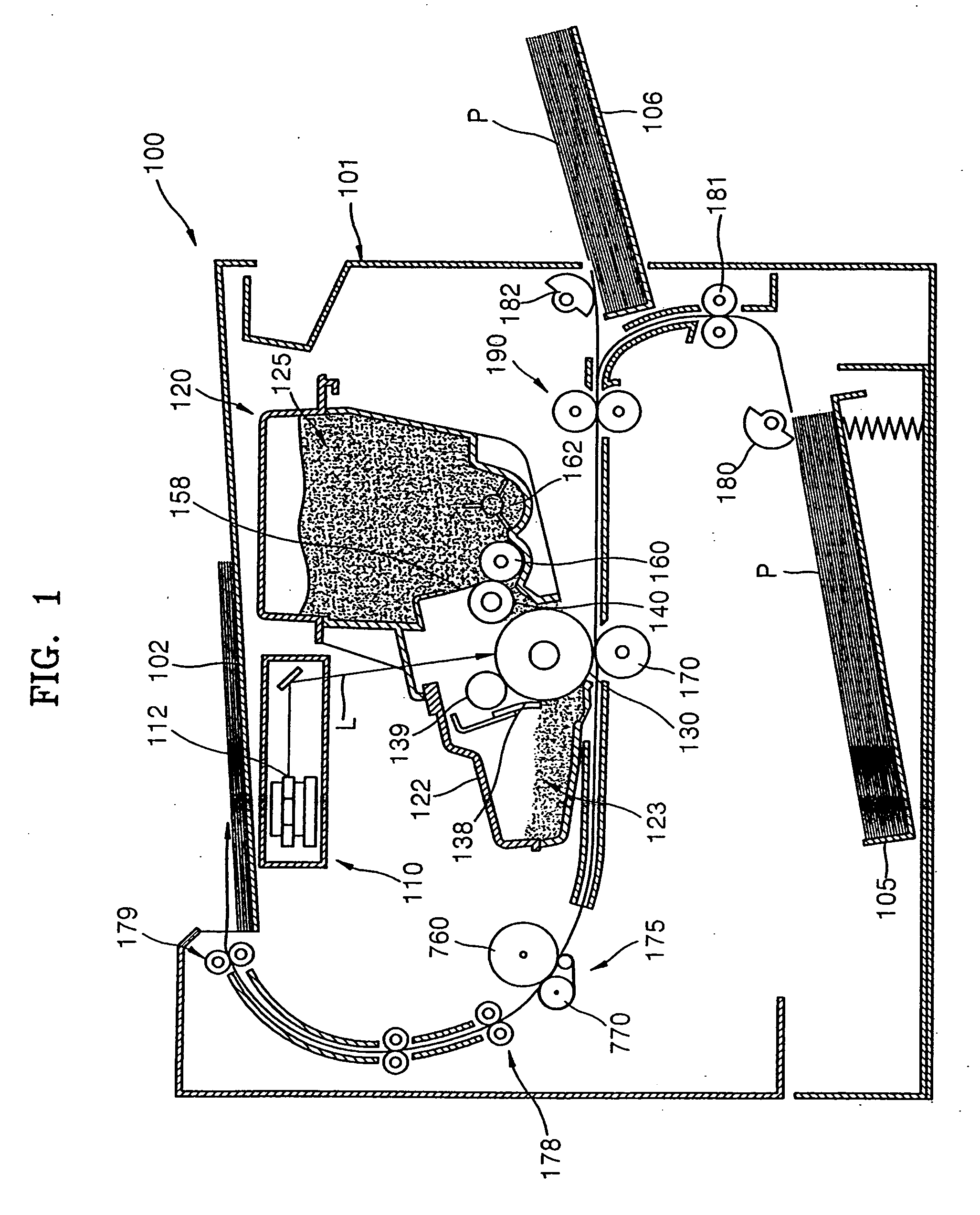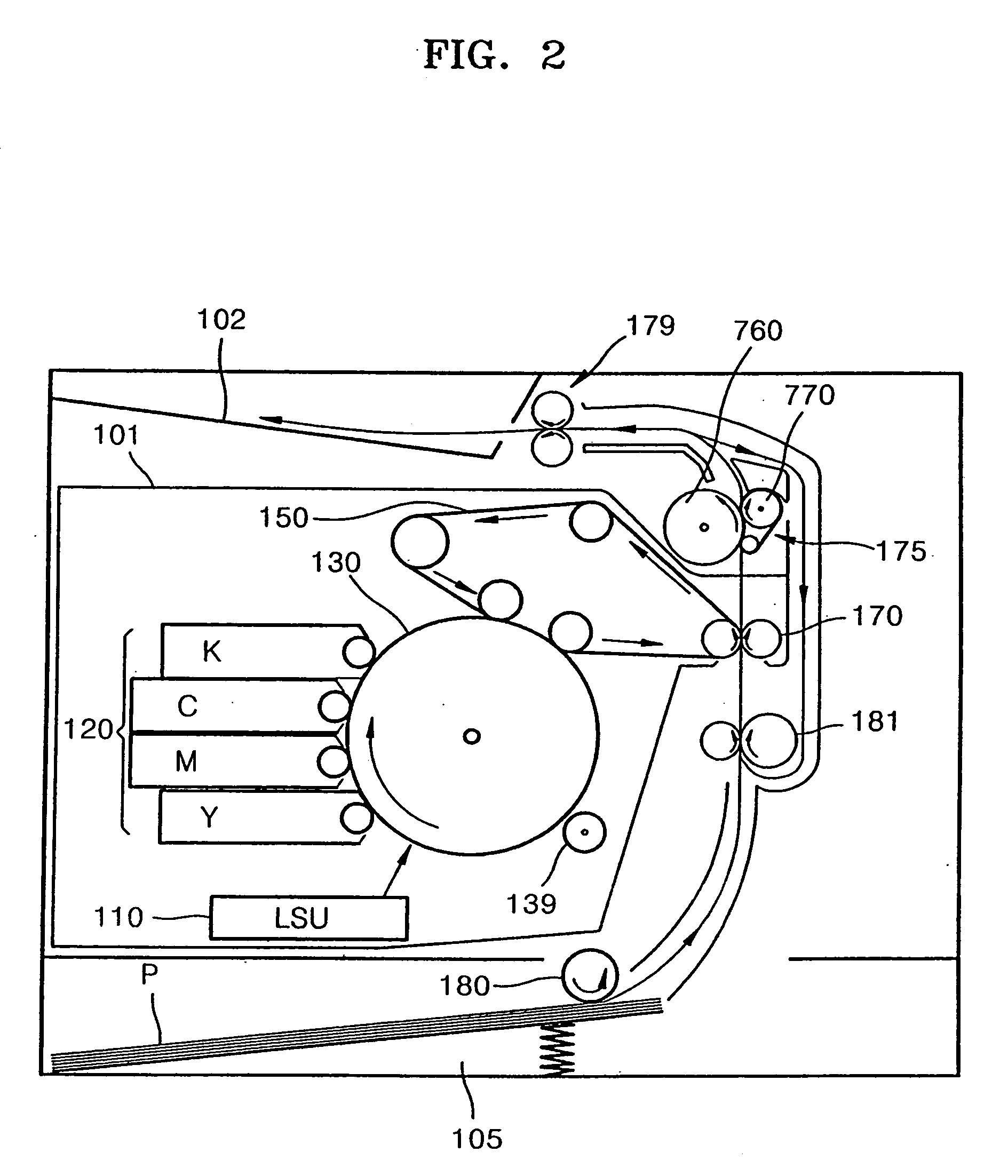Fixing device and image forming apparatus having the same
- Summary
- Abstract
- Description
- Claims
- Application Information
AI Technical Summary
Benefits of technology
Problems solved by technology
Method used
Image
Examples
Embodiment Construction
[0029] Reference will now be made in detail to the embodiments of the present general inventive concept, examples of which are illustrated in the accompanying drawings, wherein like reference numerals refer to the like elements throughout. The embodiments are described below in order to explain the present general inventive concept by referring to the figures.
[0030]FIG. 1 is a side sectional view illustrating a single-color electrophotographic type image forming apparatus 100 according to an embodiment of the present general inventive concept. The image forming apparatus 100 includes a print unit which transfers a toner image onto a printing medium P, and a fixing device 175 which fixes the toner image. The print unit includes an image forming apparatus main body 101, a light scanning unit 110, and a developing cartridge 120.
[0031] The light scanning unit 110 scans light L corresponding to image information onto a photo-sensitive member 130 and forms an electrostatic latent image ...
PUM
 Login to View More
Login to View More Abstract
Description
Claims
Application Information
 Login to View More
Login to View More - R&D
- Intellectual Property
- Life Sciences
- Materials
- Tech Scout
- Unparalleled Data Quality
- Higher Quality Content
- 60% Fewer Hallucinations
Browse by: Latest US Patents, China's latest patents, Technical Efficacy Thesaurus, Application Domain, Technology Topic, Popular Technical Reports.
© 2025 PatSnap. All rights reserved.Legal|Privacy policy|Modern Slavery Act Transparency Statement|Sitemap|About US| Contact US: help@patsnap.com



